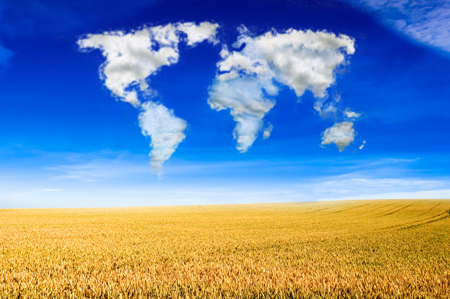Black Sea Wheat Exports Seen Rising 4% In 2019/20 – Poll
Category: Grains

(Agriculture.com) – Wheat exports from Russia, Ukraine and Kazakhstan will rise 4% in the 2019/20 marketing season, a Reuters poll showed, as June’s heatwave failed to offset favourable weather in the winter, signalling tough competition with the European Union.
The bulk of wheat from the bloc is exported via the Black Sea to customers in Africa and the Middle East, also important buyers for the European Union, whose crop is also expected to rebound this year.
Overall wheat exports from Russia, Ukraine and Kazakhstan are forecast to rise to 63.2 million tonnes in the season which started on July 1, the poll of 19 analysts, officials and traders showed. Click here see a table of the poll:
The combined 2019 wheat crop of the three countries will rise 8.5% to 120.4 million tonnes, the median estimate showed.
“The competitive advantage of Russian exporters will be improving this season: the Black Sea supply growth is positive amid (more) challenging situation with grains in the United States and possible downgrade of EU forecasts,” said Darya Snitko at Gazprombank’s economic forecasting centre.
In Russia, which is expected to remain the world’s largest wheat exporter, the June heatwave caused a number of forecast downgrades in recent weeks, and some analysts and traders said they could cut their estimates further.
SovEcon and IKAR, the leading agriculture consultancies in Moscow, cut their 2019 crop forecast on Monday.
A lower grain stockpile at the start of the season, however, will help to ease the pressure of the large crop on Russia’s domestic market.
HIGH PROTEIN
Initial data shows the wheat crop in Russia and Ukraine has a higher than usual quality, which means more high-priced wheat and increased competition between the two countries.
“Due to hot weather in June, the protein content of (Russia’s) new southern crop is reported to be higher than average,” SovEcon said.
“The main change (from the previous season) – is the change in quality of wheat: due to high temperatures, the protein is higher than usual,” a Ukraine-focused trader said.
There will be significantly more milling wheat in Ukraine this year “which means higher competition with Russia as we have almost the same trade markets,” another trader in Ukraine said.
In France, the largest producer and exporter of wheat among EU members, initial harvesting in western regions has suggested low protein. But there are expectations the heatwave may boost protein content.
Other factors which could become important for Russia’s overall trade are stagnating poultry production and signs of decline in pork production as both could cause a decline in domestic wheat consumption.
Signs of the government beefing up regulation of the export sector is also an issue to keep an eye on, Snitko added.
Kazakhstan, central Asia’s largest grain producer which will start its harvesting campaign in September, has been exporting less flour due to increased milling capacity in Central Asian countries, French Agritel consultancy said.
“The main challenge for Kazakhstan will be to export its flour instead of export more wheat,” it added.




